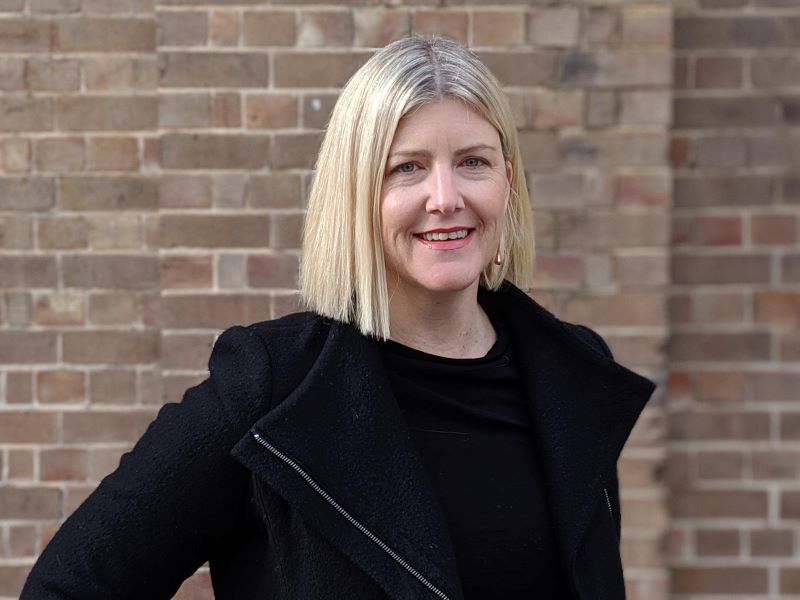Cicada Innovation chief executive Sally-Ann Williams will lead the government’s review of its women in STEM programs and deliver broader recommendations on improving diversity.
Minister for Industry and Science Ed Husic announced the Pathway to Diversity in STEM review panel on Thursday, while also reappointing Professor Lisa Harvey-Smith as the government’s Women in STEM Ambassador until November 2023.
Indigital chief executive and founder Mikaela Jade, DNA Zoo Australia director and University of Western Australia Associate Professor Dr Parwinder Kaur, and Department of Industry, Science, and Resources acting deputy secretary Narelle Luchetti are also on the panel.
Ms Harvey-Smith is not on the panel but is expected to produce research in support of the review.

According to the terms of reference, the review will look at “the delivery, effectiveness and impact of existing programs under the government’s Women in STEM program suite” and whether they are contributing to systemic and cultural change.
It will also include a re-evaluation of the Women in STEM Decadal Plan and the Advancing Women in STEM Strategy.
The 2021 edition of the government’s STEM equity monitor notes that the proportion of women in STEM-qualified jobs grew just 2 percentage points between 2020 and 2021. Women currently make up 16 per cent of people with STEM qualifications in Australia.
Further, a report by Professionals Australia last year also found that one third of women between ages 25-34 intended to leave their job within five years.
Ms Williams told InnovationAus.com that in order to change the representation of historically underrepresented groups, we need to look at running programs over decades, not just year to year.
“If you’re running programs that are working with children in primary school, it’s another six years before they finish high school. If you’re thinking about computer science or engineering or medicine, that’s another three to five, maybe even seven years when you include tertiary and on the job training,” she said.
“The reality is, we’re talking about cultural and structural changes in society and in organisations. Those things take a really long time to first make those changes and then to see the impact of those changes flow through.”
The review will also make recommendations on improving STEM participation for other historically underrepresented groups. This will address cultural and structural barriers, opportunities to broaden existing programs, and how science and innovation investments could be more inclusive of underrepresented groups.
While Ms Williams did not wish to single out any particular group, she noted that there needs to be work “to redefine what we think of as a STEM career… to articulate that in the context of First Nations experience, participation, and knowledge”.
She also highlighted the importance of improving representation of new migrants, people in regional areas, and people with disabilities, noting that the latter group includes approximately one in six Australians.
Mr Husic, who originally announced the review on September 6, said it would be an important contribution to improving diversity in STEM.
“The Pathway to Diversity in STEM review is about helping to create equal opportunities for women and historically under-represented groups to pursue education and careers in STEM, supporting them to unlock their full potential, and bolstering Australia’s STEM skills pipeline,” he said.
“STEM communities that are diverse, inclusive and collaborative are crucial to meeting the challenges of the future and maximising the nation’s potential. It also makes good business sense: studies have found firms with diverse workforces perform better.”
An evaluation of the effectiveness of evidence-based diversity boosting initiatives outside of the federal government will also be considered in order to give recommendations on best practice, according to Ms Williams.
The review will make public draft recommendations in July 2023 for consultation. Final recommendations will be provided to the minister by October 2023.
Ms Williams said she was pleased to have an entire year to “actually deeply look at this and not just try and shoot from the hip and give you a magic solution, which doesn’t exist”.
“We know that the challenge is bigger than a year, and so the other thing is, there will probably be a recommendation of ‘where to from here’,” she said.
“The reality is, all parts of society, government, industry, education, community, are going to have to engage in this work in the long term to drive cultural change, because culture drives behaviour and behaviour drives culture.
“What are those systemic levers that we can consider collectively? What are the individual levers, for example, myself, I’m a CEO, what are my levers that I can pull in my organisation to drive these changes and things like that?”
The following government programs will be reviewed:
- Australian Government Women in STEM Ambassador
- Elevate: Boosting the Next Generation of Women in STEM
- Girls in STEM Toolkit
- Male Champions of Change (STEM) – now named Champions of Change Coalition
- National Awareness Raising Initiative – ‘Future You’
- Science in Australia Gender Equity (SAGE)
- STEM Equity Monitor
- Superstars of STEM
- Women in STEM and Entrepreneurship grants (WISE)
Do you know more? Contact James Riley via Email.

